At the dawn of the 20th Century, Florida’s beaches were a prime spot for top-speed runs. Daytona/Ormond beach is 23 miles long and spans over 500 feet wide at low tide, with an ideal spectator vantage provided by the bordering grass-covered dunes. A shallow taper into the sea makes the sand flat and smooth and plenty hard from retreating tides. A perfect natural race track, provided free by Neptune, rebuilt daily, with no speed restrictions.A Short History of Beach Racing at Daytona
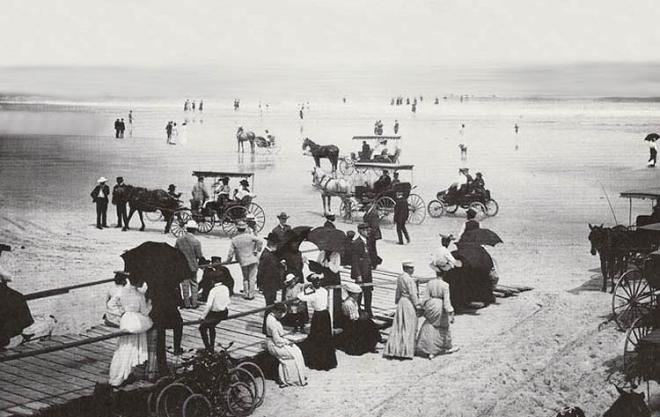
Between 1903 and 1935, Daytona was the premier Speed Record surface in the U.S., and in 1907 Glenn Curtiss stuffed his prototype V8 airplane-engine into an elaborated bicycle frame, clocking a blistering 136.8mph in one direction – the bike disintegrating on the return run down the Ormond half of the beach. The clubhouse/timing hut used for record attempts sat just over the boundary line on the ‘other half’ of the beach (there being no physical boundary), and ‘Daytona’ became notorious – probably good, as there’s no ring to a Ferrari ‘Ormond’. By 1935, record-breakers sought even saltier terrain in Utah, but only after Malcolm Campbell had seen 330mph in his ‘Bluebird’ car, passing through a 40’ wide arch under a public pier! The limitless expanse of a dry lake looked like a safer bet at such speeds.
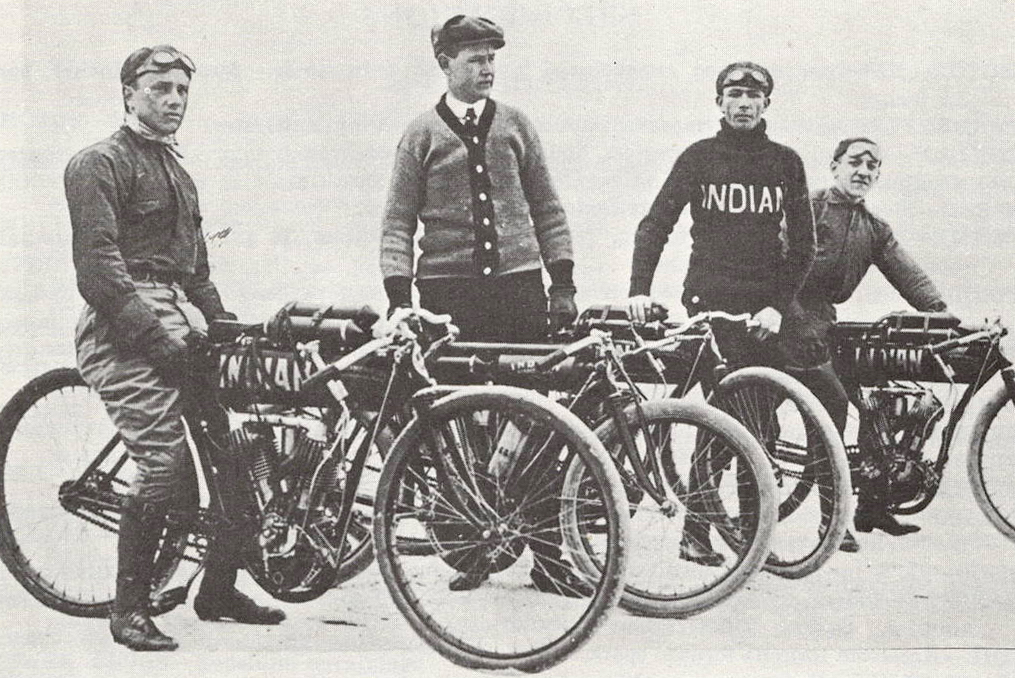
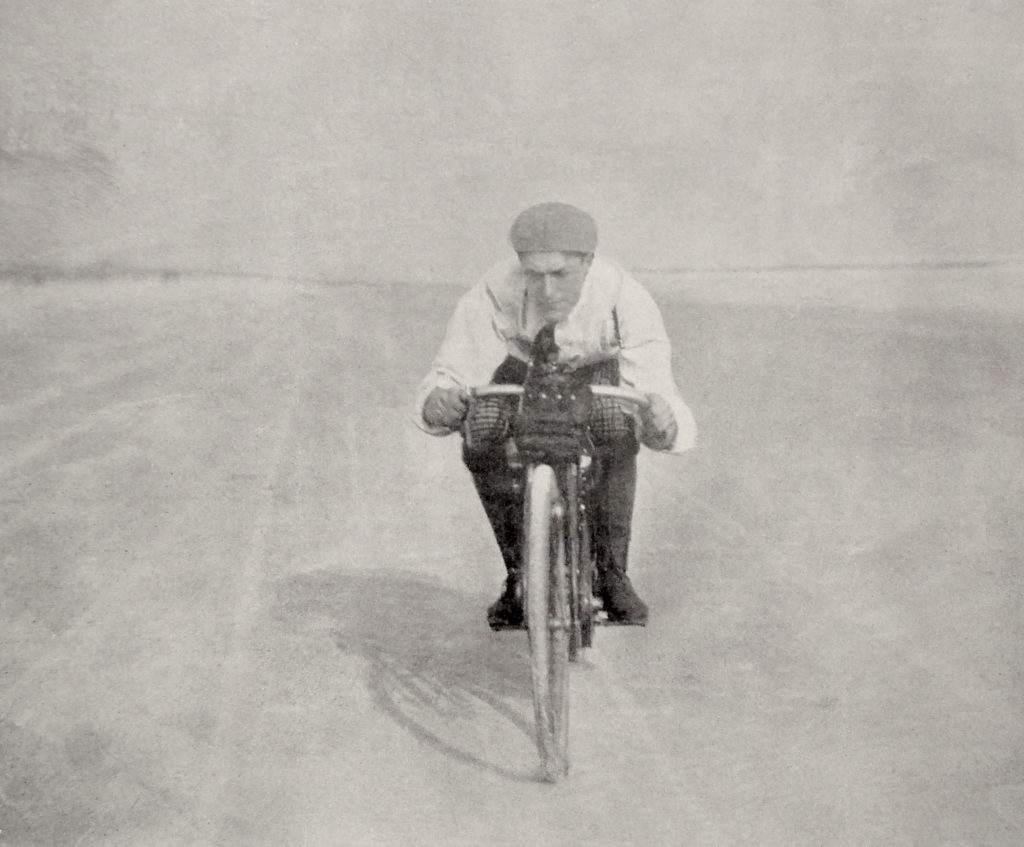
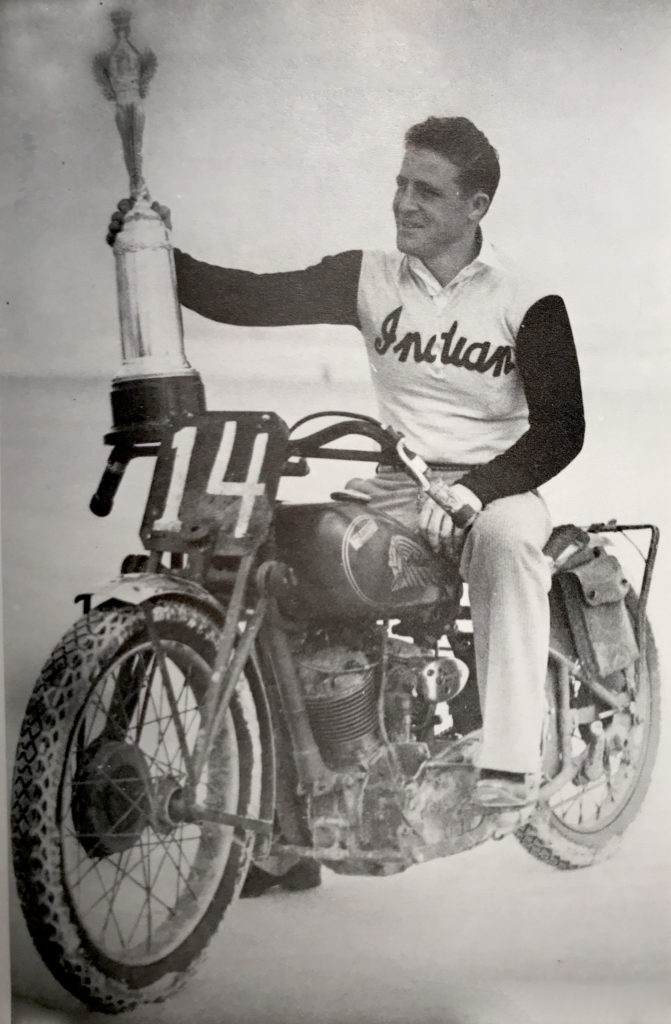
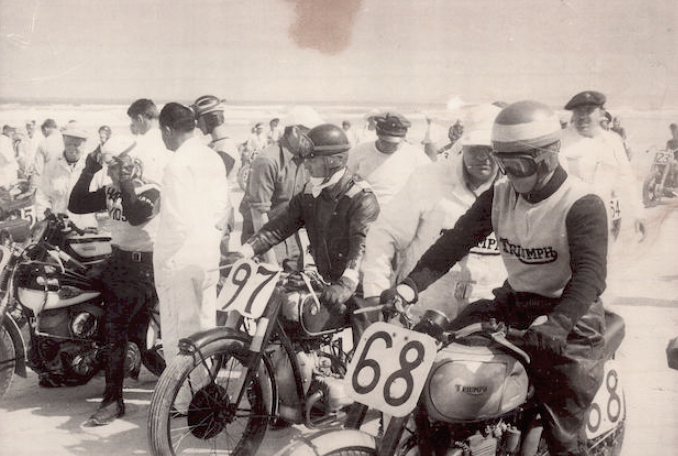
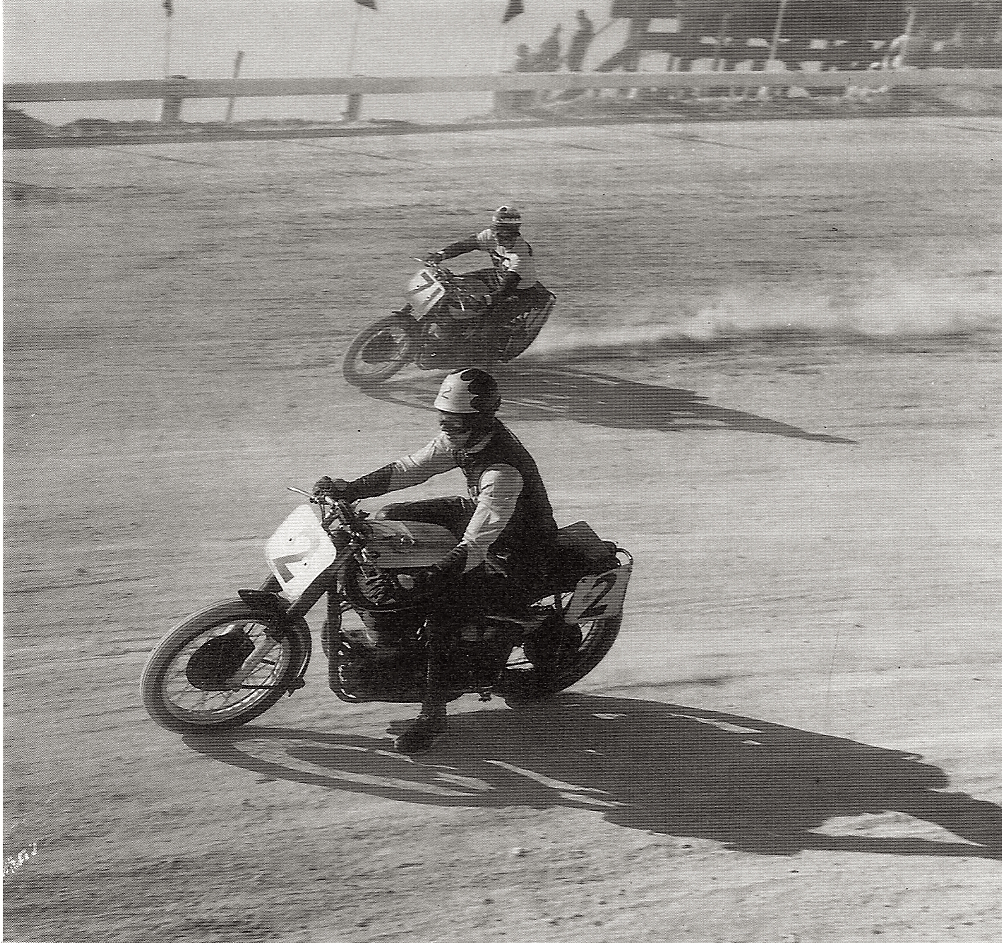
The ‘200’ was discontinued between ’42 and ’46 so racers could try their luck with guns, but the next year 176 riders indulged their pent-up Need for Speed, and Johnny Spieglehoff took the honors on his Sport Scout in front of 16,000 fans. The races became part of Bike Week, a two-wheeled invasion of Volusia County, which grew increasingly fun and ugly and crowded over the years.
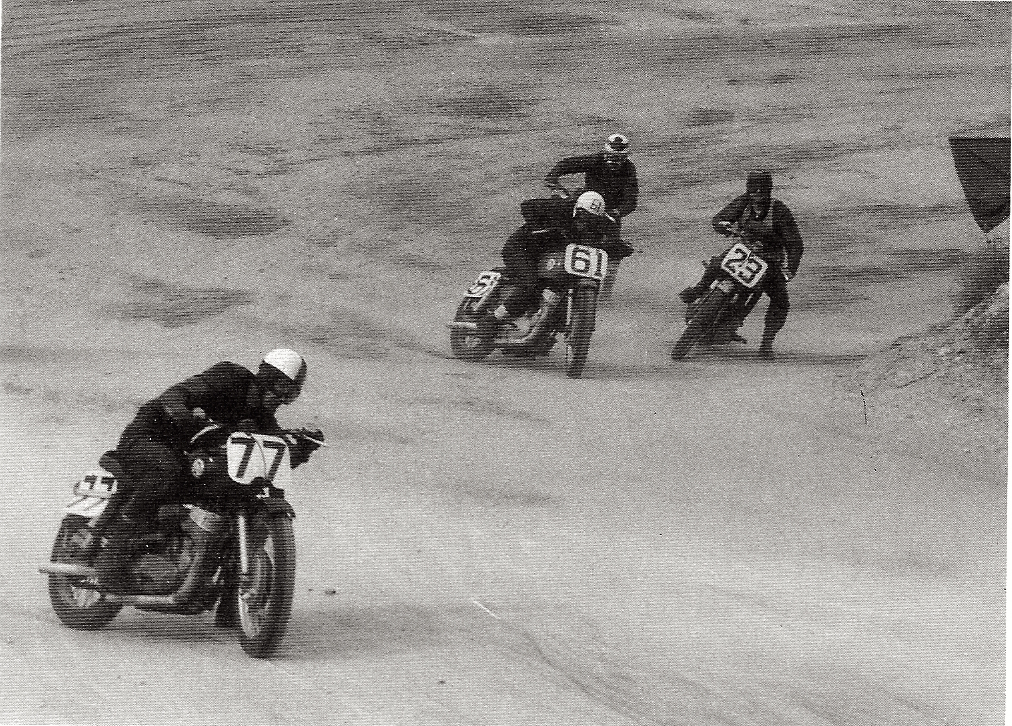
By 1949, the British Invasion scared the pants off H-D and Indian, as a Triumph Grand Prix (ridden by Jack Horn) led most of the race, and when it broke (as they usually did), Nortons swept the board, and won the next two years to boot. Harley responded by replacing their old ‘WR’ racer with the new ‘KR’, and kicked butt in ’53. Indian responded by buying the import rights for Nortons…
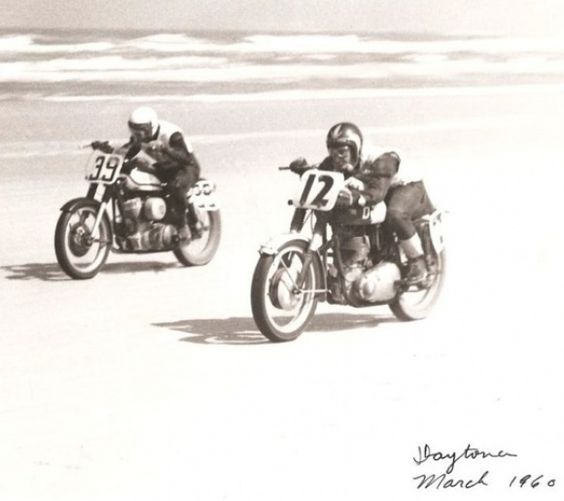
Amazingly BSA became the next great threat in ’54, pulling it all together for a sweep that year, using specially-built machines based on their ‘A7’ model. Daytona had become the premier motorcycle advertising venue in the States, and every major manufacturer wanted a piece, even BMW and Moto Guzzi, who were forced by the Class ‘C’ rules to field their prosaic roadsters instead of their Works GP bikes.
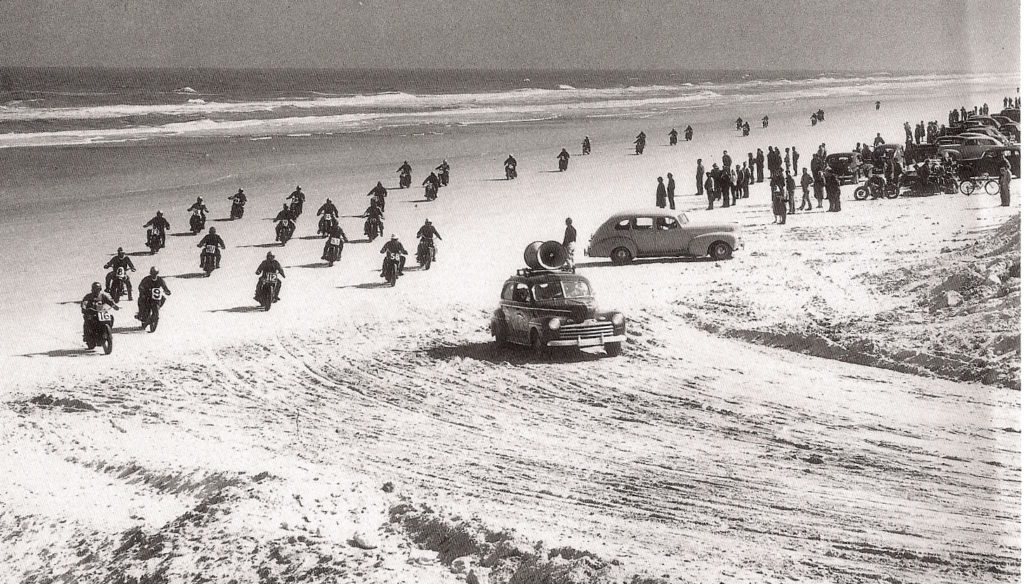
Race averages hit 95mph in the 50s, and the KR Harley became unbeatable in ’55 and for the duration of Sand Racing. American tuners extracted amazing power and reliability out of the sidevalve top-end, and used their 50% engine capacity advantage to the hilt. But Real Estate calls the shots in Florida, and development along the beautiful beaches meant motorcycles would shortly be unwelcome. Luckily Bill France had already built a giant banked track just out of town, which started a whole new era at Daytona, but sand racing was finished by 1960.
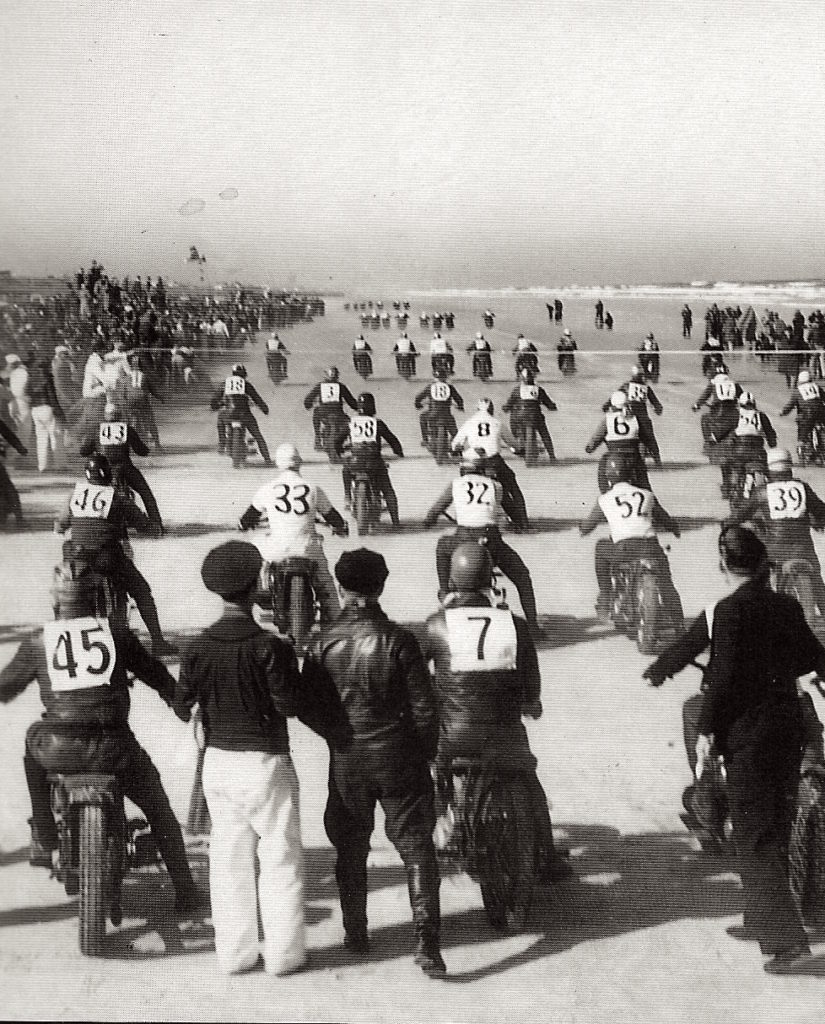
Related Posts
October 29, 2017
The Vintagent Selects: 6th Street Racing – Daytona
Travel along with the 6th Street Racing…
July 8, 2017
The Vintagent Trailers: Mancini, The Motorcycle Wizard
The mechanic that helped debut five of…

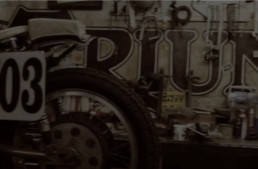
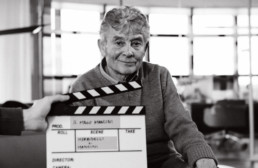
Fascinating! love this stuff,thank you ,Paul d’Orleans!
Hi, Paul,
The “1941” starting line photo is actually post-1947. The Triumph is a telescopic-fork Grand Prix model; you can just make out the square head and barrel on the bike’s left side. Also note tele forks on bike no. 123 in the far right background. The Norton Inter also appears to have Roadholders and the Triumph rider wears the ubiquitous US Army rubber-rimmed ‘tanker’s goggles.’
Great shot of the two Nortons–no. 2 is the great Dick Klamfoth.
Nice piece as always!
Looking for any video of the 1960 Daytona 100 mile amature motorcycle race. My dad was in the race and finished 3rd.
Looking for full results 1940 and 1941, my grandfather raced the race and i have a couple pictures but no idea how he did
He was killed in WW2 and so would love to know all I can
Where can I find full results, I only find winners thats all
Help Paul d’Orléans maybe?
Did you ever find what you were looking for? I am trying to find similar records.